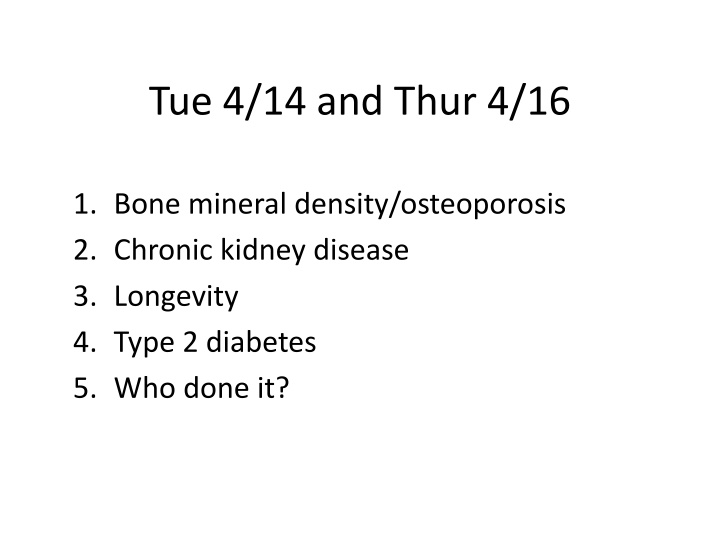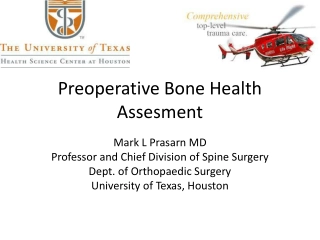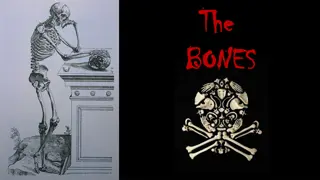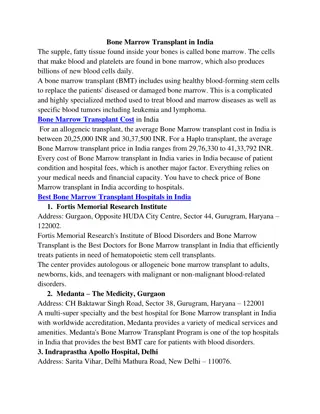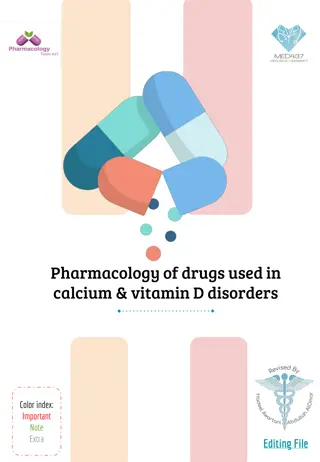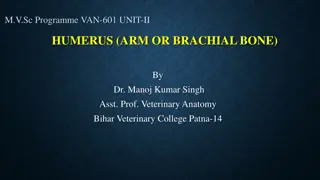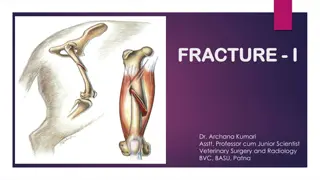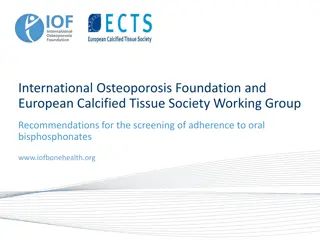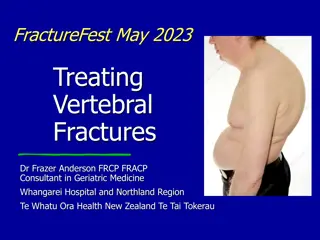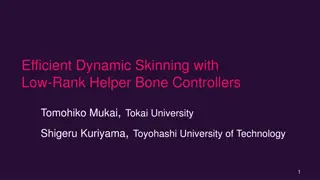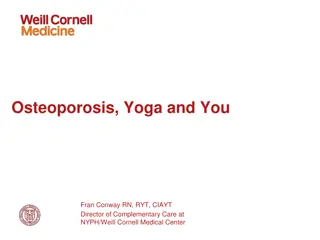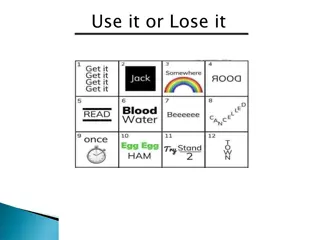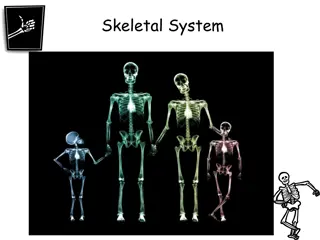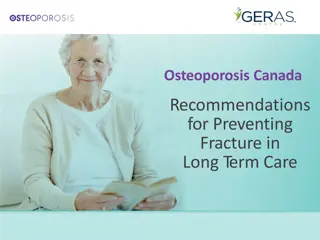Bone Health and Osteoporosis
Bones naturally become thinner as we age, increasing the risk of osteoporosis. Learn about bone mineral density, chronic kidney disease, longevity, type 2 diabetes, and stress fractures. Discover how DXA scans can help measure bone health and prevent fractures.
Download Presentation

Please find below an Image/Link to download the presentation.
The content on the website is provided AS IS for your information and personal use only. It may not be sold, licensed, or shared on other websites without obtaining consent from the author.If you encounter any issues during the download, it is possible that the publisher has removed the file from their server.
You are allowed to download the files provided on this website for personal or commercial use, subject to the condition that they are used lawfully. All files are the property of their respective owners.
The content on the website is provided AS IS for your information and personal use only. It may not be sold, licensed, or shared on other websites without obtaining consent from the author.
E N D
Presentation Transcript
Tue 4/14 and Thur 4/16 1. Bone mineral density/osteoporosis 2. Chronic kidney disease 3. Longevity 4. Type 2 diabetes 5. Who done it?
Stress Fracture A stress fracture is one type of incomplete fracture in bones. It is caused by "unusual or repeated stress" and also heavy continuous weight on the ankle or leg. This is in contrast to other types of fractures, which are usually characterized by a solitary, severe impact. It could be described as a very small sliver or crack in the bone;this is why it is sometimes dubbed "hairline fracture".
Stress fracture is a common sports injury, and most cases are associated with athletics.
The most common sites of stress fractures are the second and third metatarsals of the foot. Stress fractures are also common in the heel (calcaneus), the outer bone of the lower leg (fibula), and the navicular, a bone on the top of the midfoot.
We all lose some bone mass as we age. Bones naturally become thinner (called osteopenia) as you grow older, because existing bone is broken down faster than new bone is made. As this occurs, our bones lose calcium and other minerals and become lighter, less dense, and more porous. This makes the bones weaker and increases the chance that they might break (fracture).
Bone is living tissue, which is constantly being absorbed and replaced. Osteoporosis occurs when the creation of new bone doesn't keep up with the removal of old bone. White and Asian women especially those who are past menopause are at highest risk.
Osteoporosis symptoms Back pain, caused by a fractured or collapsed vertebra Loss of height over time A stooped posture A bone fracture that occurs much more easily than expected
Dxa scan Dual-energy X-ray absorptiometry (DXA) is a technique used to measure bone mineral density. Two X-ray beams of different energy levels are aimed at a patient s bones to determine BMD.
Low bone mass (medically termed osteopenia): A BMD defines osteopenia as a T-score between -1 and -2.5. This signifies an increased fracture risk but does not meet the criteria for osteoporosis. Osteoporosis: A BMD greater than 2.5 standard deviations from the normal (T score less than or equal to -2.5) defines osteoporosis.
Meta-analysis of 17 GWA studies Phenotypes Femoral neck bone mineral density (cases n=32,961; controls ~100K) Lumbar spine bone mineral density (cases n=31,800 ; controls ~100K) 2.5 million SNPs 56 SNPs are genome-wide significant (p < 5 x 10-8)
Femoral neck Quantilequantile(QQ) plots. (All analyzed HapMap CEU imputed SNPs passing quality control criteria in the studies (red dots) and after adjustment for 82 SNPs selected for replication(black dots).
Low BMD/Osteoporosis prevention Adequate amounts of calcium Adequate amounts of vitamin D Regular exercise
